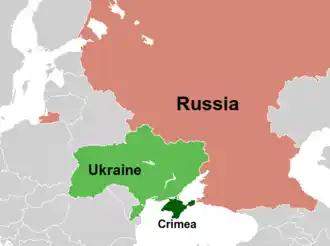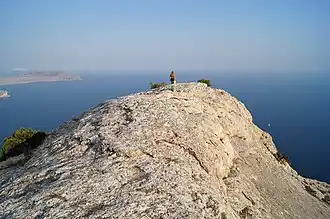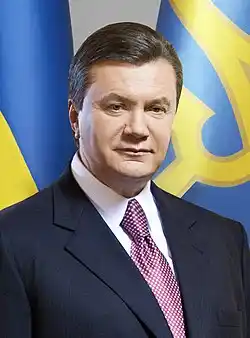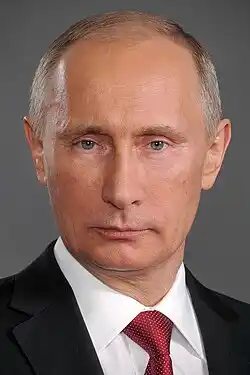
The Russian Invasion of Crimea (2014) was the invasion and annexation of the Crimean Peninsula on the Black Sea by the Russian Federation in February and March 2014, part of Russia’s more limited invasion of eastern Ukraine at that time. This conflict was initiated by the Russian leader, Vladimir Putin, in response to political changes within Ukraine which saw it adopt a more pro-western and less pre-Russian stance in 2013. Putin considers Crimea and much of the rest of Ukraine to be historic parts of Russia. International law dictates that these lands are part of Ukraine. The Crimean Peninsula was quickly overrun by Russia in a four-week long campaign from late February to late March. In the middle of this Putin announced the annexation of the peninsula into the Russian Federation. It is not recognized by most of the international community. There are reports that since 2014 Russian settlers who are more loyal to the Russian state have been moved into the Crimean Peninsula, while some who lived there have left. Thus, the invasion has led to both migration and demographic change in the Crimea, albeit of a kind which is not easy to quantify.[1]
Research your ancestors on MyHeritage
Russian invasion of Crimea chronology of eventsRussian invasion of Crimea chronology of events
The borders of virtually every country across Europe have changed and been moved countless times. This is especially the case in Eastern Europe where many countries were subsumed into vast empires in centuries gone by, namely the Russian, German and Austro-Hungarian Empires. These three imperial powers controlled Poland, Ukraine, Belarus, Moldova, Estonia, Lithuania and Latvia in the nineteenth century. It was only in the aftermath of the First World War that many of these reclaimed their independence and even then their borders changed again after the Second World War. Several nations like Ukraine and Belarus acquired a kind of pseudo-autonomy at the end of the Russian Civil War whereby they became allegedly independent 'Soviet Republics', yet in reality they were constituent parts of the Russian-dominated USSR or Soviet Union. Hence, there will always be disagreement as to where the border of a country should lie. What matters is that international law is respected in determining what territory a country has sovereignty over.[2]

These issues have created difficulties in Eastern Europe in recent times. The Russian Federation under Vladimir Putin believes it has a historic claim to large parts of eastern Ukraine and the Crimean Peninsula. The Crimean Peninsula, in particular, was captured gradually by the Russians in wars with the Ottoman Turks in the late eighteenth and nineteenth centuries. This peninsula stands on the northern end of the Black Sea, with the Sea of Azov dividing it from parts of Russia. It was later granted to Ukraine by the communist government in 1954.[3] When Ukraine became fully independent in 1991 at the end of the Cold War as the USSR broke up into fifteen different nations it was allowed to keep the Crimean Peninsula. Putin believes Russia has a legitimate claim to the Crimean Peninsula as it was gifted to Ukraine in 1954, but international law dictates that the sovereign boundaries of other countries must be respected.[4]
The issue of the status of Crimea and eastern Ukraine was not a contentious one for over two decades after the end of the Cold War. Although Ukraine split from Russia in 1991, its governments remained broadly pro-Russian and closely allied with Moscow through the 1990s and for much of the 2000s. Gradually, though, more pro-western governments began to emerge, especially so following the Orange Revolution of 2004/2005. Many politicians and parties within Ukraine began arguing that Ukraine should be aiming to join the European Union (EU), with all the economic benefits that move would bring, and to perhaps join the North Atlantic Treaty Organization (NATO) as a protection against potential Russian interference in its affairs. These moves concerned Putin.[5]

The immediate spark for the invasion of Crimea in 2014 was when the pro-Russian President of Ukraine, Viktor Yanukovych, scrapped an association agreement which Ukraine had planned with the EU. This triggered popular unrest in Ukraine, a revolution known as Euromaidan. Yanukovych fled from Ukraine to Russia and a new pro-European and pro-American government came to power in Kyiv. In response, Putin ordered the invasion of the Crimean Peninsula in late February 2014.[6] The peninsula was quickly overrun and pacified in the space of a campaign of slightly less than four weeks, after which Russia also invaded the eastern provinces of Ukraine around the cities of Donetsk and Luhansk. The Crimean Peninsula was annexed into the Russian Federation in which 97% of people were said to have voted in favor of union with Russia.[7]
The Crimean Peninsula has remained under Russian rule ever since. A regional conflict simmered in the Donbass region of eastern Ukraine for years until Russia extended its war against Ukraine in February 2022. It has since conquered a strip of territory all along the northern side of the Sea of Azov, connecting Crimea by land with the conquered territories in Donetsk and Luhansk. It is a sign of how secure Russian control over the Crimea is that the Ukrainians have never attempted a campaign against Russia’s hold on it, although some attacks have been launched against critical infrastructure there like bridges and naval facilities. As of 2025, as peace-feelers have been put out to both sides, it has been a core demand of Putin’s government that its possession of the Crimean Peninsula be recognized by Ukraine and the international community.[8]
Demographic impact of Russian invasion on the Crimean PeninsulaDemographic impact of Russian invasion on the Crimean Peninsula

It is difficult to assess the demographic impact of political events as recent as 2014 and Russia clearly has a vested interest in not fully revealing the extent of migration in and out of the Crimean Peninsula since it seized the territory. Nevertheless, there were reports within days of the annexation that many people, especially ethnic Crimean Tatars, a group who have experienced persecution under Russian rule for centuries, were fleeing from the peninsula to Ukraine.[9]
There is also substantial evidence that Vladimir Putin has ordered the resettlement of more loyal Russians in the peninsula since 2014. The picture is further complicated again by events since 2022. While Ukraine has not attempted to invade and reclaim the peninsula, Crimea is nevertheless very near the frontlines of the conflict following the expansion of the war with Ukraine in February of that year. As it is subject to rocket attacks and the like, a number of people have left the peninsula and moved to safer parts of Russia. How many remains unclear in what is now a highly militarized part of the world.[10] Ultimately the migratory and demographic impact of the Russian invasion will only be known years from now when these events can be studied objectively and systematically.
See alsoSee also
Explore more about the Russian invasion of Crimea (2014)Explore more about the Russian invasion of Crimea (2014)
- Conflict in Ukraine: A timeline (2014 – eve of 2022 invasion) at the UK House of Commons Library
- Why was Crimea taken so easily? Nine years in Ukraine at the Imperial War Museums
- Russia and Ukraine: the tangled history that connects—and divides—them at National Geographic
- Russia’s War in Ukraine: Identity, History, and Conflict at the Center for Strategic and International Studies
References
- ↑ https://commonslibrary.parliament.uk/research-briefings/cbp-9476/
- ↑ Lewis Baston, Borders: A History of Europe in 29 Borders (London, 2025).
- ↑ https://www.wilsoncenter.org/publication/why-did-russia-give-away-crimea-sixty-years-ago
- ↑ https://www.cfr.org/timeline/ukraines-struggle-independence-russias-shadow
- ↑ https://www.pbs.org/newshour/world/a-historical-timeline-of-post-independence-ukraine
- ↑ https://www.bbc.co.uk/news/world-europe-30131108
- ↑ https://commonslibrary.parliament.uk/research-briefings/cbp-9476/
- ↑ https://www.bbc.co.uk/news/articles/c0l0k4389g2o
- ↑ https://www.theguardian.com/world/2014/mar/24/crimea-exodus-journalists-activists-tatars
- ↑ https://www.cfr.org/global-conflict-tracker/conflict/conflict-ukraine

